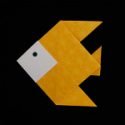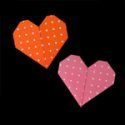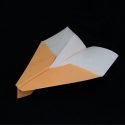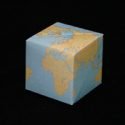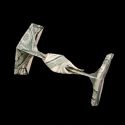Simplified Shibori: Tie Dye Napkins

Originally, shibori referred to the “shaped resist dyeing” of fabric. Fabric is tightly bound with strings and selectively dipped in dye to form elaborate patterns. See video here.
The term sometimes refers to the selective dyeing of polygon-folded paper. Here, paper towels are folded origami-style and dyed to give colorful napkins.
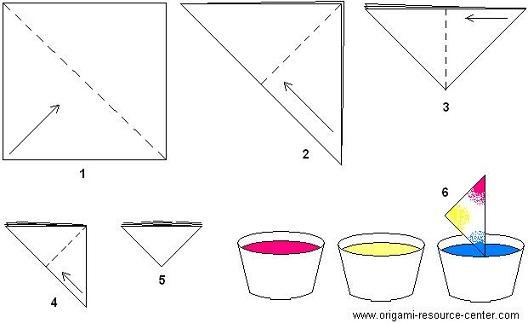
Simplified Shibori: Tie Dye Napkins Instructions
- Rip off a sheet of paper towel from a roll. Cut the sheet into a square. Any size works; here, the square is about 6″ x 6″.
- Fold the sheet corner to corner to form a triangle.
- Repeat: fold the triangle into another, smaller triangle.
- Repeat two more time, each time the triangle getting smaller
- and smaller. In total, the sheet is folded 4 times resulting in a triangle that is one sixteenth its original size.
- Dip each corner of the folded triangle into dye (food coloring mixed with water, or dyes used in Easter egg decorating).
- When all corners are done, carefully unfold the triangle to find a beautiful pattern.
Variation: Experiment with different folding sequences. For example, fold into a small square and dip all 4 corners. Or, pleat into a skinny strip, fold in half, then dip the edges. How about fold along the diagonal? Children who have experience with origami may find other creative ways to fold the napkin before dipping.
—> go to School Projects
—> go to other kid’s projects
—> go to Site Map
—> see shibori books, paper, fabric, and clothing
-
Books with Easy Origami
- Easy Origami: over 30 simple projects by John Montroll
- Origami Fun Kit for Beginners by John Montroll
- My First Origami Kit by Joel Stern
- Easy Origami: A Step-by-Step Guide for Kids by C Alexander & M Meinking
- Fun With Easy Origami (Dover Origami Papercraft)
- Origami: A Step-by-Step Introduction to the Art of Paper Folding by T Cook & S Henry
- Easy Origami For Kids Book Traditional Japanese Folding Papers Overs 20 Projects by J Wish
- Easy Origami for Kids: Over 40 Simple Origami Projects by O Brooks
Please Help
Please help by reporting broken links so that we can fix them. One easy message from you can save us hours and hours of clicking. Thanks!
-
More Origami Diagrams and Instructions…
-
These free origami instructions are made available to you by the paper folding community at large. If you have a diagram you would like to share, or if your diagram is listed here and you wish to have it removed, please Contact Us. Diagrams are intended for personal use. Copyright of the models lie with the origami creators and designers. Please contact the designer and/or creator directly for non-private usage of a model and/or artwork.









